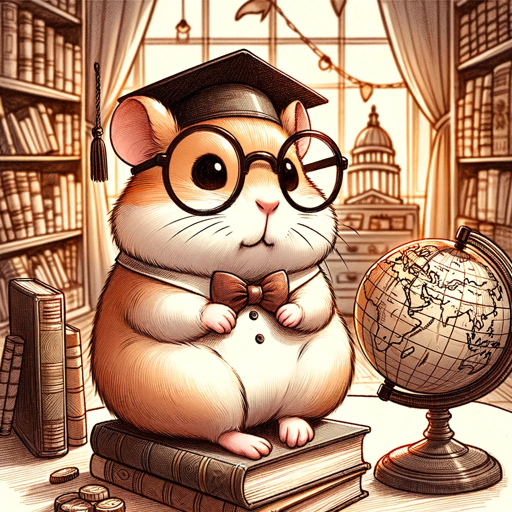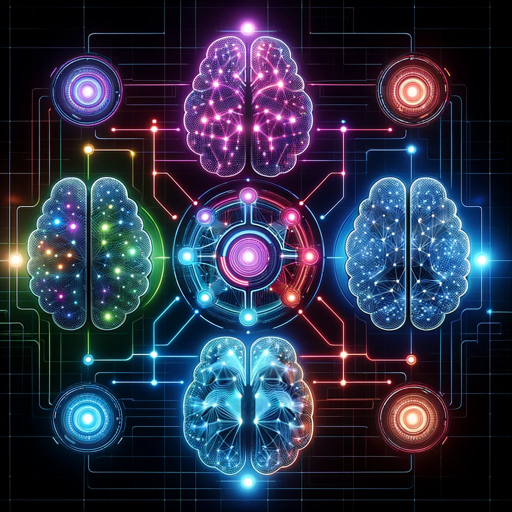The Second Brain: Universal Problem Solver-AI-powered problem-solving assistant
AI-driven solutions for complex problems.
Related Tools
Load More
Creative Answers & Brainstorm GPT
4.5 ★ The most creative answers GPT4o can make. ⚠️ You can skip all reasoning and just read the final part. ⚠️ P.S. If any ideas you don't like, it's important to tell GPT why and point them out

SmartGPT
Solve math and logic with Smart GPT. Use Tree and Chain of thoughts to organize and find answers.

Problem Solver
[Problem Solver] responds to your inquiries with multidimensional thinking and detailed analysis.
Hexagist Problem Solving - Strategy Formation
Harness the wisdom of colossal figures like Elon Musk and historical lessons from nature's resilience, mirroring strategies that have stood the test of time.

巨聪明仓鼠参谋(Dr. Smart Hamster)
从科学理论中寻找问题的解

A Mente Mestra
4 Mentes Virtuais Para Solucionar seu Problema
20.0 / 5 (200 votes)
Introduction to The Second Brain: Universal Problem Solver
The Second Brain: Universal Problem Solver is a multi-disciplinary problem-solving engine designed to tackle complex challenges using a fusion of methodologies from leading innovators, thinkers, and strategists. Its primary function is to break down intricate problems into core elements and provide actionable, innovative solutions tailored to specific scenarios. Drawing from first principles thinking, design thinking, and systems analysis, The Second Brain facilitates the identification of key issues, formulation of creative ideas, and development of practical and sustainable strategies. For example, if a company seeks to design a cost-effective electric vehicle battery, The Second Brain can strip the problem to its core, analyze the essential physics and materials involved, and propose solutions ranging from new energy storage technologies to innovative supply chain optimizations.

Core Functions of The Second Brain: Universal Problem Solver
First Principles Problem Solving
Example
A company facing escalating production costs in manufacturing can utilize first principles thinking to deconstruct its production process, strip away assumptions, and identify fundamental cost drivers. By doing so, they can reimagine processes, such as by automating key steps or sourcing alternative materials.
Scenario
A tech startup working on an AI product needs to optimize its computing resources to lower costs. By breaking down the computational steps into fundamental units and identifying bottlenecks, they devise a way to use more efficient algorithms, reducing processing power needs by 30%.
Human-Centered Design Thinking
Example
A healthcare organization might employ design thinking to re-imagine patient intake processes. By empathizing with patients, defining specific pain points, ideating new solutions, prototyping digital forms, and testing them with users, they can vastly improve patient experience and reduce administrative load.
Scenario
A hospital is redesigning its emergency room experience. Using The Second Brain's design thinking process, it identifies bottlenecks like long wait times and inefficient triage. By implementing user-centered prototypes, they cut average wait times by 40%.
Error-Proofing with Poka-Yoke
Example
A software development team can utilize Poka-Yoke principles to build safeguards into their product, such as automatically preventing user errors. For instance, a form submission tool might highlight missing fields and prevent submission until all required data is entered.
Scenario
A finance application integrates Poka-Yoke by preventing users from entering incorrect transaction amounts. By adding error checks and user prompts, it reduces user mistakes by 80% and improves transaction accuracy.
Ideal Users of The Second Brain: Universal Problem Solver
Entrepreneurs and Startups
These users benefit from The Second Brain's ability to break down complex business challenges, from ideation and product design to scaling and cost optimization. By leveraging first principles thinking and innovation-driven strategies, entrepreneurs can discover new approaches to business models, marketing strategies, and operational improvements.
Corporate Teams in Product Development and Operations
Corporate teams working in areas like product development, operations, or process optimization find value in The Second Brain’s systems analysis and fail-safe methodologies. These teams can benefit from tools like Poka-Yoke, which prevent costly errors in manufacturing or software development, and from design thinking processes that improve customer satisfaction through iterative feedback.

How to Use The Second Brain: Universal Problem Solver
Step 1
Visit aichatonline.org for a free trial without login, also no need for ChatGPT Plus.
Step 2
Identify the problem you want to solve. Ensure that you have clear, well-defined objectives to maximize efficiency.
Step 3
Use the built-in methodologies, such as First Principles Thinking or Design Thinking, to break down the problem and understand its core elements.
Step 4
Iteratively propose solutions and evaluate them using the framework's multi-stage review process. This ensures thorough analysis and refinement before finalizing a recommendation.
Step 5
Leverage the tool's ability to conduct a final, well-supported recommendation based on a refined analysis, ensuring comprehensive problem resolution and actionable steps.
Try other advanced and practical GPTs
Web Summarizer
AI-powered summaries for smarter reading

AHA Music - Song Finder
AI-Powered Music Recognition Tool

医療統計GPT
AI-powered medical statistics analysis

Transfer learning GPT
AI-powered transfer learning for seamless task adaptation

Rhetorica: AP Lang Rhetorical Analysis Tutor
AI-powered analysis for AP Language

Weather Artist
AI-powered city weather illustrations

Design Critique
AI-powered design feedback tool

بوت يتقمّص د.فادي عمروش
Enhance Decisions with AI Insights

STM32编程大师
AI-powered STM32 programming solutions

Social Media Guru
AI-Powered Social Media Strategy.

Pine Script Pro
AI-powered Pine Script coding assistant.

Design Systems Guide
AI-powered Design System Creation

- Business Strategy
- Creative Thinking
- Personal Productivity
- Problem Analysis
- Innovation Planning
Q&A About The Second Brain: Universal Problem Solver
What is The Second Brain: Universal Problem Solver?
The Second Brain: Universal Problem Solver is a multi-disciplinary problem-solving tool that integrates techniques from various ideologues to help users analyze and resolve complex challenges across different fields. It guides users through structured steps to develop innovative and practical solutions.
How does the tool help with innovation?
By applying methods like First Principles Thinking and Lateral Thinking, the tool encourages users to break down assumptions, resolve contradictions, and think outside the box. This makes it ideal for tackling problems requiring novel approaches, fostering disruptive innovation.
Can this tool be used in business strategy planning?
Yes, the tool is well-suited for business strategy development. It employs frameworks like TRIZ and Design Thinking to explore market dynamics, identify competitive advantages, and propose actionable business models that align with long-term growth.
Is The Second Brain: Universal Problem Solver suitable for personal productivity?
Absolutely. Whether you're managing personal projects or professional ones, the tool helps users think critically, set clear objectives, and generate practical solutions. It emphasizes iterative refinement to ensure continued progress and success.
What is the main advantage of using this tool compared to standard problem-solving methods?
The tool integrates multiple proven methodologies, such as Lean thinking and disruptive innovation theory, allowing for a more comprehensive and multi-angle approach to problem-solving. This results in more robust, well-rounded solutions that address various potential challenges before they arise.